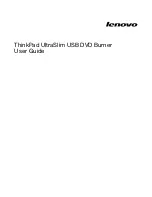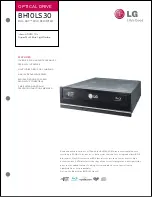
3.3.5 Balance
The FCM 106 is balanced to class R according to ISO8821
(reduced balance). For critical applications especially at
high speed (>4000 RPM) special balance (class S) may be
required.
3.3.6 Output shafts
Output shafts are manufactured from 35/40 Ton (460/540
MN/m
2
) tensile steel. Drive end shafts are provided with a
tapped hole to DIN332 Form D and a closed profile
keyway as standard.
3.3.7 FCM 106 Inertia
Inertia J
Asynchronous motor
PM motor
FCM 106
1)
3000 RPM
1500 RPM
3000 RPM
1500 RPM
0.55
N.A.
N.A.
N.A.
0.00047
0.75
0.0007
0.0025
0.00047
0.0007
1.1
0.00089
0.00373
0.00047
0.00091
1.5
0.00156
0.00373
0.0007
0.0011
2.2
0.0018
0.00558
0.00091
0.00082
3.0
0.00405
0.00703
0.00082
0.00104
4.0
0.00648
0.0133
0.00107
0.00131
5.5
0.014
0.03
0.00131
0.0136
7.5
0.016
0.036
0.0136
0.0206
Table 3.8 Inertia [kgm
2
]
1) Power ratings relate to NO, see chapter 6.2 Electrical Data.
3.3.8 FCM 106 - Motor Frame Size
Frequency
converter
power size
1)
Asynchronous motor PM motor
[kW]
1500 RPM 3000 RPM 1500 RPM 3000 RPM
0.55
N.A.
N.A.
71
N.A.
0.75
80
71
71
71
1.1
90
80
71
71
1.5
90
80
71
71
2.2
100
90
90
71
3
100
90
90
90
4
112
100
90
90
5.5
112
112
112
90
7.5
132
112
112
112
Table 3.9 FCM 106 - Motor Frame Size for PM and
Asynchronous Motors
1) Power ratings relate to NO, see chapter 6.2 Electrical Data.
3.3.9 Motor Thermal Protection
Motor protection can be implemented using a range of
techniques: Electronic Thermal Relay (ETR); thermistor
sensor placed between motor windings or a mechanical
thermal switch (Klixon type).
3.3.9.1 Electronic Thermal Relay
ETR is functional for asynchronous motors only. The ETR
protection comprises simulation of a bimetal relay based
on internal frequency converter measurements of the
actual current and speed. The characteristic is shown in
.
195NA497.10
1.2
1.0
1.4
30
10
20
100
60
40
50
1.8
1.6
2.0
2000
500
200
400
300
1000
600
t [s]
f
OUT
= 2 x f
M,N
f
OUT
= 0.1 x f
M,N
f
OUT
= 1 x f
M,N
(par. 1-23)
I
MN
(par. 1-24)
I
M
Illustration 3.5 ETR Protection Characteristic
The X-axis shows the ratio between I
motor
and I
motor
nominal. The Y-axis shows the time in seconds before the
ETR cuts off and trips the frequency converter. The curves
show the characteristic nominal speed at twice the
nominal speed, and at 0.1x the nominal speed.
It is clear that at lower speed the ETR cuts off at lower
heat, due to less cooling of the motor. In that way, the
motor is protected from over-heating, even at low speed.
Summary
ETR is functional for asynchronous motors only. The ETR
protects the motor against over-heating, and no further
motor protection is required. When the motor is heated
up, the ETR timer controls the duration of running at high
temperature, before stopping the motor to prevent over-
heating.
When the motor is overloaded before reaching the
temperature where the ETR shuts off the motor, the
current limit protects the motor and application against
overload. In this case, ETR will not activate and therefore a
different method of thermal protection is required.
Activate ETR in
1-90 Motor Thermal Protection
. ETR is
controlled in
4-18 Current Limit Mode
.
System Integration
VLT
®
DriveMotor FCP 106 and FCM 106 Design Guide
28
MG03M102 -
08/2015
3
3
Summary of Contents for VLT DriveMotor FCM 106
Page 2: ......
















































